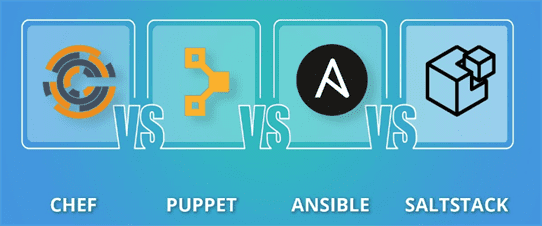Tag: Ansible
What is Configuration Management?

Configuration management is the process by which a company or organization defines and tracks the state of its infrastructural resources. Encapsulated in those resources are both physical hardware and software. It is a means to ensure that when changes are made to a system, those changes are tracked, geared toward the ultimate predefined criteria of what state should be.
Using Ansible in DevOps: A Beginners Guide
Introduction
Ansible is a system of configuration management written in Python programming language which uses a declarative markup language to describe configurations. It’s used for automation of configuration and OS setup. Ansible is often used to manage Linux-nodes, but Windows is also supported. It supports work with devices with Python v2.4 and higher installed through SSH connection. In this article, we are going to review the DevOps tool called Ansible.
The Best DevOps Tools for Infrastructure Automation
Today, DevOps teams try to utilize automation as much as possible. This is to cut down on the sheer number of repeatable processes to limit man-hours worked, throttle development efforts, and to reduce the possibility of errors. This is also a business necessity to reduce overhead costs, increase the speed of the CI/CD process and increase customer satisfaction. There are multiple individual areas that need to be automated to have a fully autonomous infrastructure. Luckily, there are various tools we can take advantage of to help us automate our infrastructure and make sure we have well-developed DevOps processes. In this article we will go over the several of the best DevOps tools for our infrastructure systems.
Which one is appropriate for you?

Table of Contents
I. Puppet
II. SaltStack
III. Chef
IV. Ansible
IV. Conclusion
Introduction
Configuring a single server with the required software is a reasonably simple task. However, if numerous servers need to have the same or similar software and configurations installed on them, the process would use numerous man-hours to complete, which would deplete your already strained resources. Without some form of automation, this task can become nearly insurmountable. With this task in mind, new configuration management tools were developed to address the need to deploy new servers with premade configurations and updates, that allowed for a smoother and more manageable automation process. To keep these servers syncing and to manage updates across a broad swath of hosts in a data center or cloud environment, automation tools like Puppet, SaltStack, Chef, and Ansible meet this need.
What is Chef?
Chef is a popular, open-source, IaC (Infrastructure as Code) management tool. It eases administration, configuration, and deployment of server resources across a network from a central location.
Installing Jenkins on Ubuntu 16.04
What Is Jenkins?
Jenkins is an open source automation server software developed in Java. It allows developers to integrate CI/CD (Continuous Integration/Continuous Delivery) pipelines within their organization that ease and automate workflows. It has an extensive help community, supports over 1000 plugins, allows users the ability to automate almost any task and, it saves significant time that can be better utilized addressing other issues.
How to Use Ansible

Ansible is an easy-to-use automation software that can update a server, configure tasks, manage daily server functions and deploys jobs as needed on a schedule of your choosing. It is usually administered from a single location or control server and uses SSH to connect to the remote servers. Because it employs SSH to connect, it is very secure and, there is no software to install on the servers being managed. It can be run from your desktop, laptop or other platforms to assist with automating the tedious tasks which every server owner faces.
Ansible is an automation engine, similar to Chef or Puppet, that can be used to ensure deployment and configuration consistency across many servers, and keep servers and applications up to date. Unlike some other tools, Ansible does not require a client component/agent.
How to Install Ansible on Fedora 21 via Yum
Ansible is an automation engine, similar to Chef or Puppet, that can be used to ensure deployment and configuration consistency across many servers, and keep servers and applications up-to-date. Though, unlike some other tools, Ansible does not require a client component/agent.
How to Install Ansible on Fedora 20 via Yum
Ansible is an automation engine, similar to Chef or Puppet, that can be used to ensure deployment and configuration consistency across many servers, and keep servers and applications up-to-date. Though, unlike some other tools, Ansible does not require a client component/agent.
Our Sales and Support teams are available 24 hours by phone or e-mail to assist.

